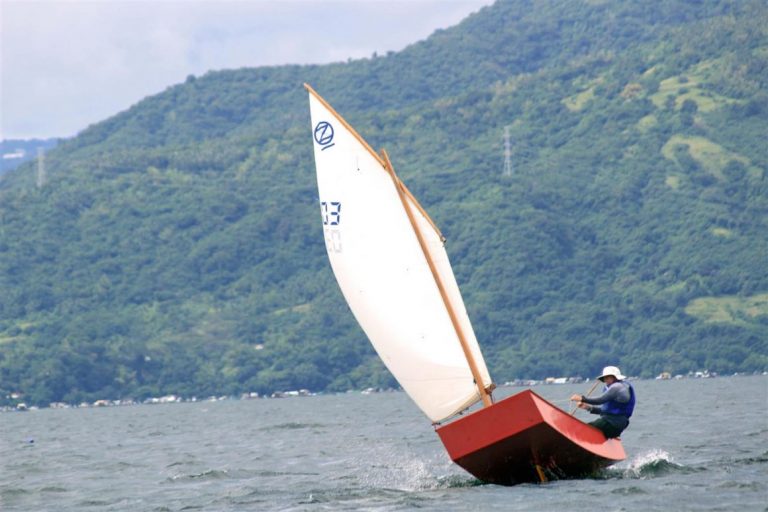Is it better to go fast and low or slow and high upwind?
A BETTER RESOURCE on this TOPIC
This has actually changed a lot in the last few years. We now recommend this approach which sees higher speeds upwind and much less leeway.
How we used to think
Paul, You are right about sailing at hullspeed or a little less to reach an upwind goal
At least in boats that don’t have enough power to plane upwind – like the OzRacer or OzGoose
Generally the hull drag is starting to reach one of its peaks as you hit hullspeed – which is when the peak of the sternwave is exactly equal with the transom on most sailing dinghies.
Measure the waterline in feet and take its square root. Then multiply by 1.34 = Hullspeed.
Note that we have a better discussion on this topic now – how things have changed in 15 years! It is better to go a bit faster in gusts and not point up
Generally it is most efficient on boats that don’t plane to hang a little below hullspeed and keep the boat at that pace by pointing higher in the gusts – being really careful not to lose the speed – keep the peak of the sternwave just in front of the transom.
This assumes the wind is strong enough for the boat to reach hullspeed.
Where the wind is too light to reach hullspeed most sailors get used to how the boat should feel when it is going OK upwind and try to sail as close to the wind as possible while retaining the speed.

The 60 degree quantity you mention isn’t correct for all boats – every boat will have an optimum angle – which also depends on the roughness of the water and the amount of drag coming from the hull and rig and whether the boat can exceed hull speed (dinghies and yachts that can plane upwind and multihulls)
In general the less drag the higher the boat can point.
The NS14 is optimised towards minimum drag so can point very high. This is a 1972 photo of a boat designed and built by Malcolm Eggins. One of the greats in the class.

Generally a pointing angle of 45 degrees (tacking angle of 90 degrees) is considered OK for dinghies that cannot plane upwind.
Planing dinghies and catamarans have the option of dropping down a few degrees but gaining so much speed the extra distance is worth it.
______________________
I experienced a real life example of pointing angle related to drag thismorning sailing our OZRacers in stronger winds for the first time.
The polytarp sails are ok reaching and running but when heading upwind the stretch in the fabric makes the sail into a big bag, rather then the smooth aerodynamic shape that it is in lighter winds upwind.
This causes quite a lot of drag – so in the end I found that I had to steer a few degrees lower in gusts and ease sails to keep the boat flat.
If I did the normal thing that you do with a conventional sail – point up higher to keep the boat flat it would just stop.
The lower pointing angle came from the extra drag of the distorted sail.
Better polytarp made all the difference.

Of course real sailcloth is even better.

Boatmik